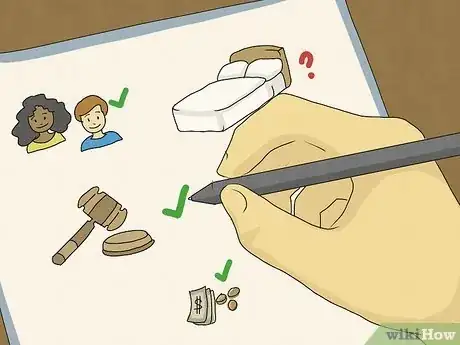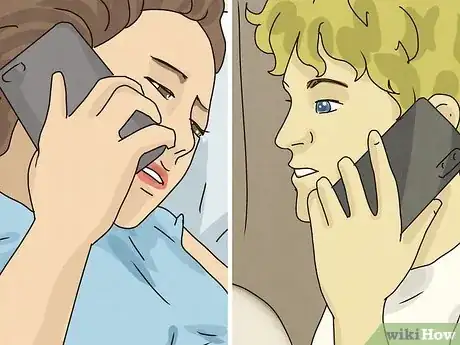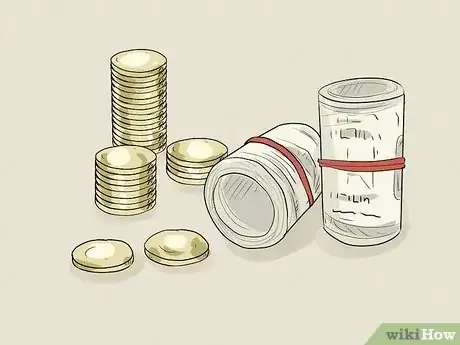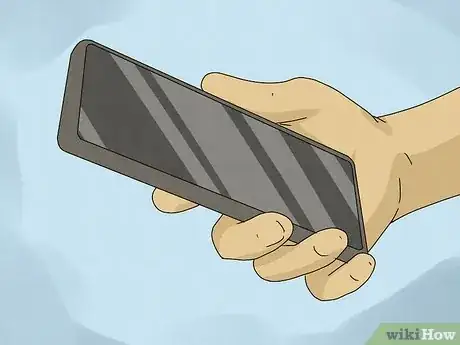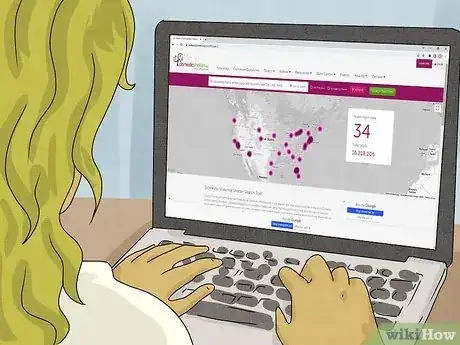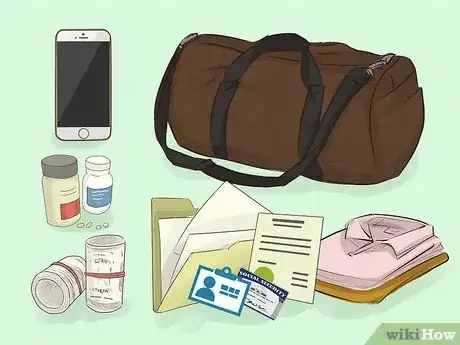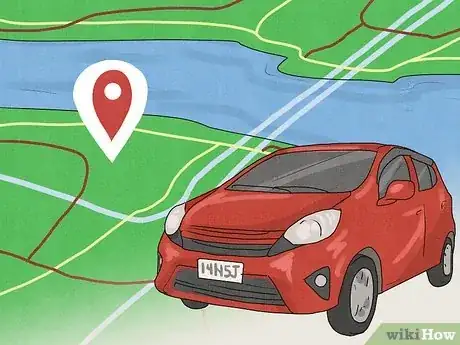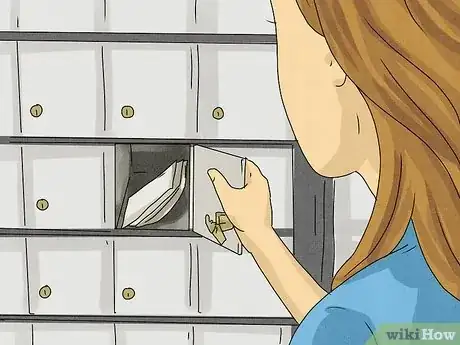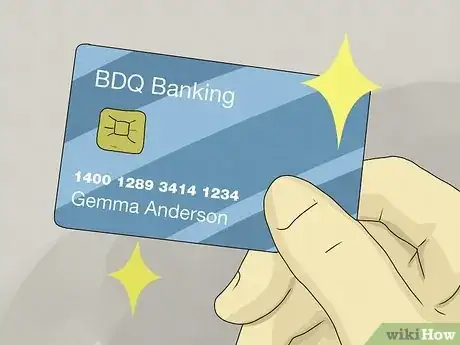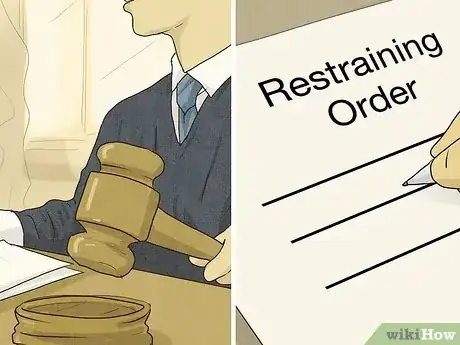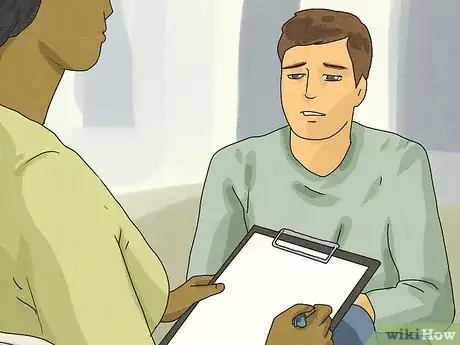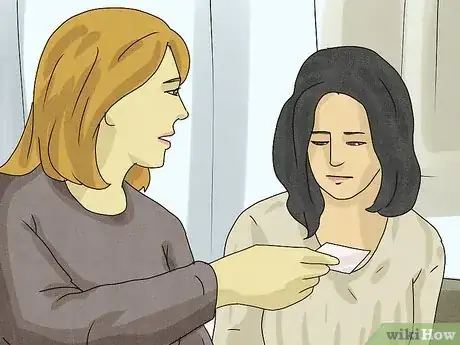This article was written by Moshe Ratson, MFT, PCC and by wikiHow staff writer, Janice Tieperman. Moshe Ratson is the Executive Director of spiral2grow Marriage & Family Therapy, a coaching and therapy clinic in New York City. Moshe is an International Coach Federation accredited Professional Certified Coach (PCC). He received his MS in Marriage and Family Therapy from Iona College. Moshe is a clinical member of the American Association of Marriage and Family Therapy (AAMFT), and a member of the International Coach Federation (ICF).
There are 13 references cited in this article, which can be found at the bottom of the page.
This article has been viewed 19,362 times.
Emotional abuse may not leave physical scars, but that doesn’t make it any real. You’re absolutely in the right for wanting to leave an emotionally abusive relationship—but how are you supposed to quickly and safely make your exit without getting caught in your partner’s crosshairs? You’re not alone in any of this. We’ve got your back with plenty of expert-verified tips and strategies that will help you break free of your partner and take control. The first step is always the hardest, and we’re proud of you for putting your physical, mental, and emotional wellbeing first!
This article is based on an interview with our licensed marriage and family therapist, Moshe Ratson, MFT, PCC. Check out the full interview here.
Steps
Making a Safe Escape Plan
-
1Create a safety plan while you still live with your abuser. Even if emotionally abusive relationships aren’t physically violent, they can still be very dangerous—your partner might intimidate you, threaten to hurt you, or prevent you from accessing your money.[2] If you find yourself feeling unsafe, a pre-made safety plan can offer some comfort and stability.[3] You might:
- Move to a safe corner of the home where you can easily escape if the situation escalates
- Come up with an excuse to leave the home (like going grocery shopping)
- Let your friends and family know about the emotional abuse
- Plan to take legal action against your abuser
- Save money to reach financial independence
-
2Ask your friends and family for help. Set up a meeting with a trusted friend or relative when your abuser isn’t around. Let them know about your situation, and ask if they’d be willing to help you break away from the relationship.[4] You might say:
- “Jamie has verbally and financially abused me for months now, and I don’t feel safe around him anymore. I want to break things off, but I’m afraid. Would you mind helping me out?”
- “I don’t want to be with Andrew anymore, but he owns the house and I have no place to go if I leave. Could I crash on your couch for a couple of nights until I can find a more permanent place to stay?”
-
3Set aside money that your abuser can’t access. Many emotional abusers control their victims by blocking their access to their money. Slowly start setting aside money in small amounts, so your partner doesn’t catch on to what you’re doing. For extra security, ask a trusted friend or loved one to hold onto your money so your abuser can’t get their hands on it.
- A separate bank account is the safest place for your money, but setting one up may not be an option while you’re still living with your emotional (and financial) abuser. That’s okay—just focus on setting aside whatever money you can, and then set up a bank account once you’re out of the relationship.
-
4Get a second cell phone and access the web from a safe location. Buy a new, prepaid “burner” phone that your abuser doesn’t know the number to. Only give this new phone number out to trusted friends and relatives, so you can stay in touch during and after your escape. While you’re at it, ditch the desktop computer or laptop at your home and use a public computer. That way, your abuser won’t be able to keep tabs on your search history.[5]
- Some domestic violence shelters offer prepaid phones for free.
- If you can do it safely, start changing your usernames and passwords so your abuser can’t access your accounts. You might have to wait until you’re no longer living with your abuser to do this, though.[6]
-
5Find a safe place to live after you leave. Ask a friend or loved one if you can stay with them temporarily while you find a new place to stay. If you don’t feel comfortable reaching out to someone you know, that’s okay—you can always stay at a domestic violence shelter for free.[7]
- A domestic violence shelter is a safe place where you can temporarily stay after escaping an abusive relationship. The addresses of domestic violence shelters aren’t posted online, so your abuser won’t be able to find you easily.
- A shelter is a great, safe option to consider if you’re escaping with your children.
- Your local shelter likely knows about other helpful resources for abuse victims, so don’t be afraid to get in touch (even before you leave).
- You can find local domestic violence shelters here: https://www.domesticshelters.org/
-
6Pack up your essentials so you can leave quickly. Stick the bare essentials in a duffel bag, backpack, or other bag that’s easy to grab and carry at a moment’s notice. Stash only the necessities in your bag, like:[8]
- Your important papers and ID card
- Extra sets of clothes
- Extra money
- Medication
- Make sure you hide this bag in a place where your partner won’t find it easily. To be extra safe, keep it at a friend or relative’s home.
-
7Figure out the logistics of your escape so you can head out quickly. Even if you aren’t in any immediate physical danger, an escape plan can offer some valuable peace of mind in the days and weeks leading up to your departure.
- Memorize a list of emergency contact numbers that you can call if the situation gets out of control.
- If you have your own car, be sure to keep it totally fueled up and ready to go. When your partner isn’t home, practice getting into your car and driving away as quickly as possible.
- If you plan to escape on foot, plan the route you’ll take out and away from your home.
-
8Make your escape as quickly as possible. Leave your home as quickly as possible, so your abuser doesn’t have as much time to stop or get in the way of your escape.[9]
- Review the escape plan that you made earlier, especially if you’re escaping with your children. That way, everyone will be on the same page.
Protecting Yourself After You Leave
-
1Switch up your daily routine. Try heading to work at a different time, or shopping at a different grocery store for food. Small adjustments can make a big difference overall, and may make it really hard for your abuser to track you down.[10] You could:
- Head out for work at 7:30 AM instead of 8:00 AM
- Take a different route home
- Park further away from your workplace
-
2Set up a P.O. box for yourself. Visit your local post office and register a P.O. box in your name. Even if your abuser manages to find your P.O. box number, they won’t be able to be able to find your exact address.[11]
- USPS charges a monthly fee for P.O. boxes, depending on the size. You can get an extra-small P.O. box for about $5 a month, a small box for around $6, a medium box for about $10, and a large box for around $14.[12]
-
3Create a new bank account so you have financial independence. Set up a bank account solely in your name, so your partner can’t access any of the money inside. Deposit all of the savings you’ve set aside into this account, so you have a small nest egg to rely on.[13]
-
4Let your employer know about your situation. Explain that you’ve recently left your abusive partner, and that you’re worried they’ll show up and create a scene at work.[14] Your boss or supervisor might offer some solutions to make your life a little easier, like:
- Banning your ex-partner from entering the workplace
- Switching your office or work location
- Letting you work remotely
-
5Take legal action if your abuser won’t leave you alone. Emotional abuse isn’t always easy to prosecute—it really depends on where you live and what your partner has done. In some places, you can ask to file a restraining order against an ex-partner for “coercive control,” which falls under the emotional abuse umbrella.[15]
- Of course, you can always file a restraining order if your abuser is stalking you and invading your privacy.
Warnings
- In many cases, emotional abusers often escalate to physical violence in their relationships. Even if your partner isn’t physically abusive now, they might get physical with you in the future.[24]⧼thumbs_response⧽
- Emotional abusers often use surveillance devices to maintain control over their victim. Keep an eye out for anything that looks strange or out of place, like a random new app on your phone. Leave any devices or cameras you find in place, though, so your abuser doesn’t suspect what you’re up to.[25]⧼thumbs_response⧽
References
- ↑ https://au.reachout.com/articles/what-is-emotional-abuse
- ↑ https://au.reachout.com/articles/what-is-emotional-abuse
- ↑ https://www.womenshealth.gov/relationships-and-safety/domestic-violence/leaving-abusive-relationship
- ↑ https://www.womenshealth.gov/relationships-and-safety/domestic-violence/leaving-abusive-relationship
- ↑ https://www.womenshealth.gov/relationships-and-safety/domestic-violence/leaving-abusive-relationship
- ↑ https://www.helpguide.org/articles/abuse/getting-out-of-an-abusive-relationship.htm
- ↑ https://www.womenshealth.gov/relationships-and-safety/domestic-violence/leaving-abusive-relationship
- ↑ https://www.mayoclinic.org/healthy-lifestyle/adult-health/in-depth/domestic-violence/art-20048397
- ↑ https://www.helpguide.org/articles/abuse/getting-out-of-an-abusive-relationship.htm
- ↑ https://www.helpguide.org/articles/abuse/getting-out-of-an-abusive-relationship.htm
- ↑ https://www.womenslaw.org/about-abuse/safety-tips/safety-confidential-address
- ↑ https://www.usps.com/manage/po-boxes.htm
- ↑ https://www.facs.nsw.gov.au/domestic-violence/stay-safe/leaving-safely
- ↑ https://www.womenslaw.org/about-abuse/safety-tips/safety-confidential-address
- ↑ https://www.womenslaw.org/about-abuse/forms-abuse/emotional-and-psychological-abuse#1%20same?
- ↑ https://health.clevelandclinic.org/how-to-heal-from-emotional-abuse/
- ↑ https://www.helpguide.org/articles/therapy-medication/support-groups.htm
- ↑ https://www.psychologytoday.com/us/blog/invisible-chains/201512/recovery-after-controlling-relationship
- ↑ https://www.safehorizon.org/programs/supporting-someone-emotionally-abusive-relationship/
- ↑ https://www.psychologytoday.com/us/blog/charm-harm/201612/helping-loved-ones-in-emotionally-abusive-relationships
- ↑ https://www.safehorizon.org/programs/supporting-someone-emotionally-abusive-relationship/
- ↑ https://www.psychologytoday.com/us/blog/charm-harm/201612/helping-loved-ones-in-emotionally-abusive-relationships
- ↑ https://www.helpguide.org/articles/abuse/getting-out-of-an-abusive-relationship.htm
- ↑ https://www.womenshealth.gov/relationships-and-safety/domestic-violence/leaving-abusive-relationship
- ↑ https://www.helpguide.org/articles/abuse/getting-out-of-an-abusive-relationship.htm

